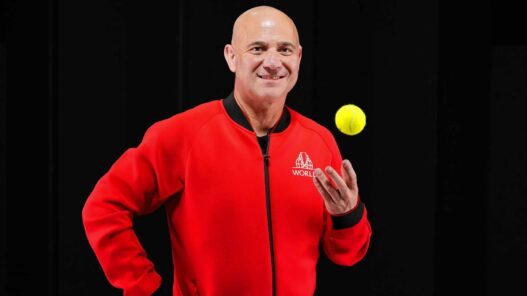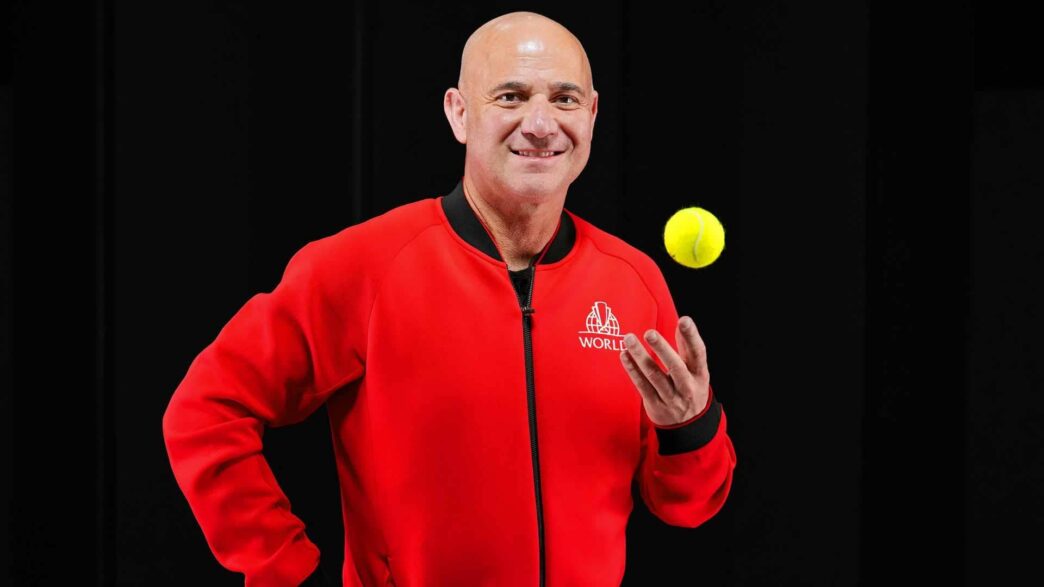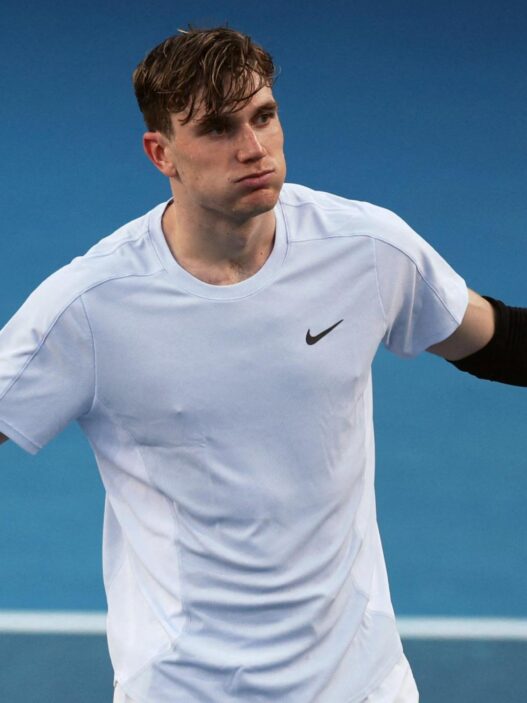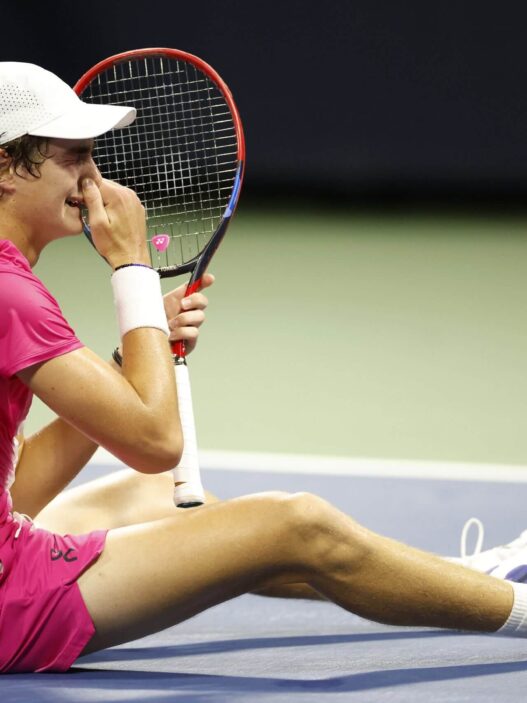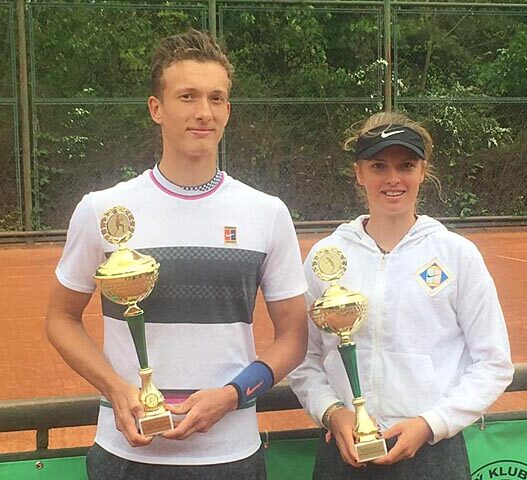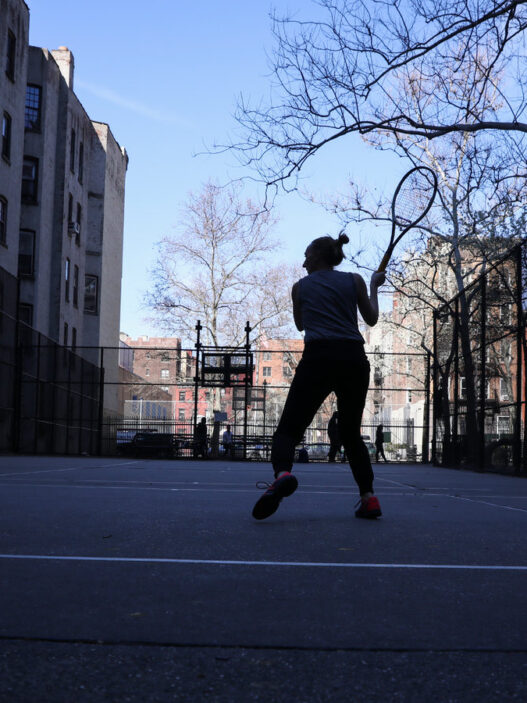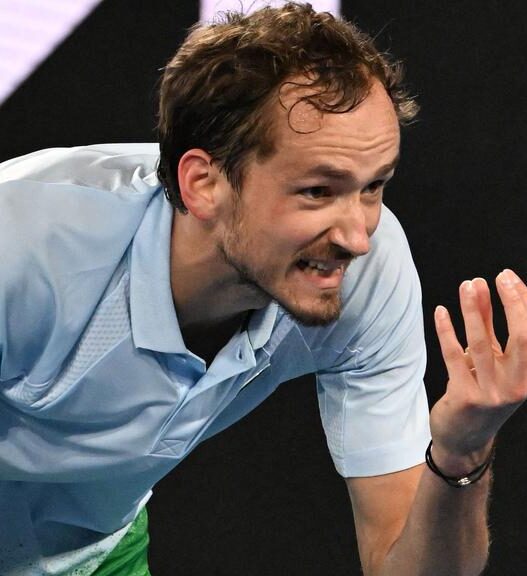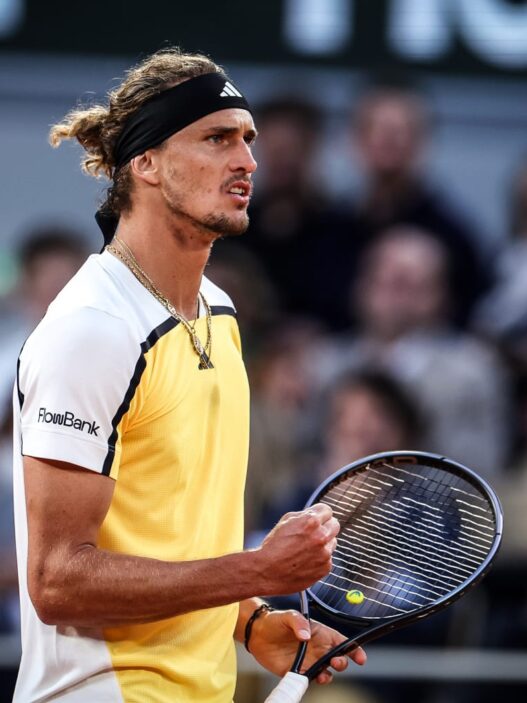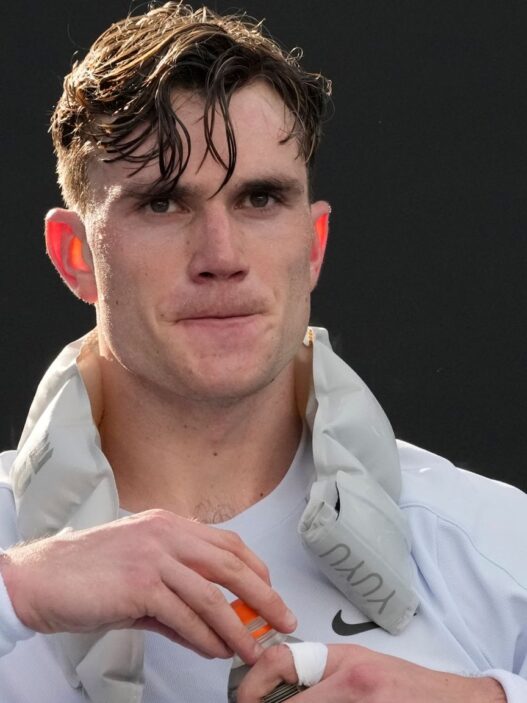In the late 1980s, Andre Agassi burst onto the tennis scene with an energy that was at once magnetic and polarizing. His look—a wild mane of bleached hair, neon clothing, and denim shorts—was a rebellion against the tennis establishment. He was more than just a player; he was a brand. But behind the rock star persona and rebellious image lay a deep conflict that would come to define his early years. Agassi’s ascension to fame was meteoric, but so were his doubts about the sport that made him a household name. The irony was that tennis, the very thing that gave him everything, was also what he claimed to despise.
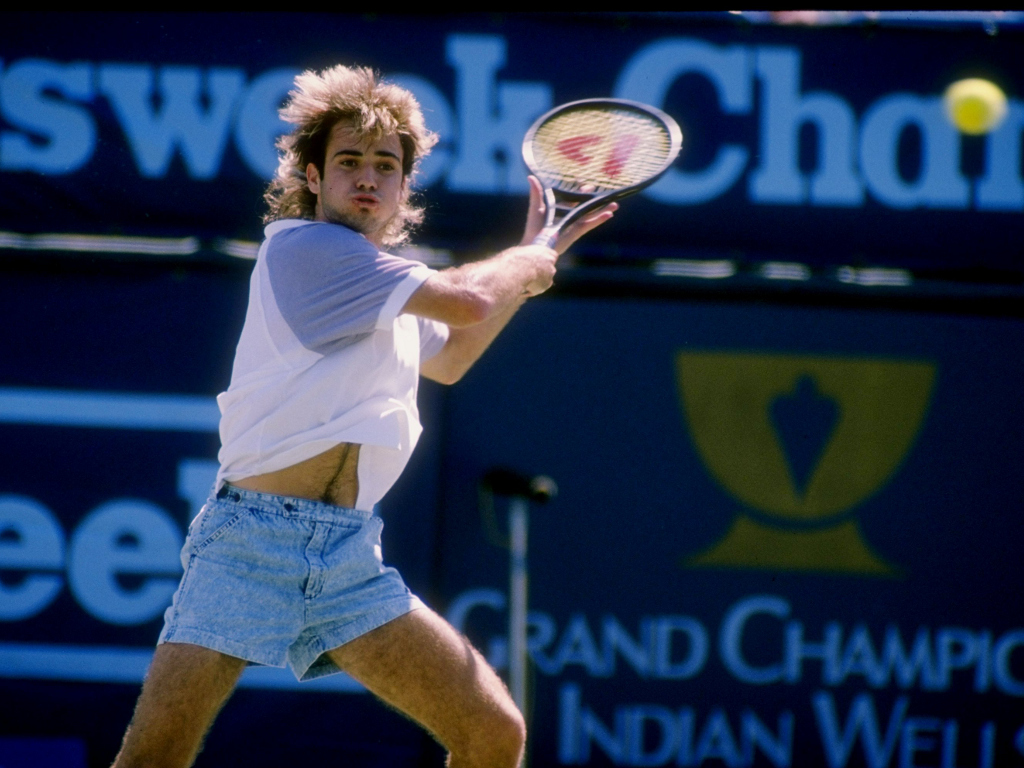
At 16, Agassi joined the pro tour with a flair and confidence that seemed boundless. His forehand was a weapon, his speed unmatched. But his ascent into tennis stardom was not entirely joyful. By his own admission, Agassi hated tennis. The pressure of a domineering father, Mike Agassi, who pushed him relentlessly into the sport from a young age, loomed large over his success. He felt trapped by the expectations placed on him—both by his family and the public.
In his 2009 memoir Open, Agassi confessed that tennis had often felt like a prison, one that he could not escape, despite his immense talent. His father’s dream for him was to be the world’s best tennis player, but for much of his early career, Agassi wasn’t sure if that was what he wanted for himself. He described his father’s relentless coaching regimen as being more about control than about passion. “He drove me to exhaustion, then past it,” Agassi wrote. Despite this, or perhaps because of it, Agassi found success early, winning his first Grand Slam at Wimbledon in 1992.
But even as he lifted that Wimbledon trophy—a crowning moment for most tennis players—Agassi’s ambivalence toward the sport persisted. While tennis brought him fame and fortune, it also deepened his sense of isolation. By the late 1990s, after a string of personal and professional setbacks, Agassi’s life hit a low point. His ranking had fallen to 141, and his personal life was in disarray. It was during this time that Agassi confessed to using crystal meth, a revelation that would later shock the tennis world. His struggles with drug use were a symptom of a deeper unhappiness, a man who was grappling with his identity in a sport he felt trapped in.
Yet, as low as his career sank in 1997, Agassi’s journey was far from over. With a renewed focus on fitness and a new coach in Brad Gilbert, Agassi began one of the most remarkable comebacks in tennis history. His physical transformation was dramatic—once criticized for his lack of fitness, Agassi became one of the fittest players on tour. His game, too, evolved, moving away from the flashy, often erratic play of his early years to a more disciplined, controlled style. The results were immediate. In 1999, Agassi won the French Open, completing the rare Career Grand Slam and cementing his place as one of the greatest players of all time.
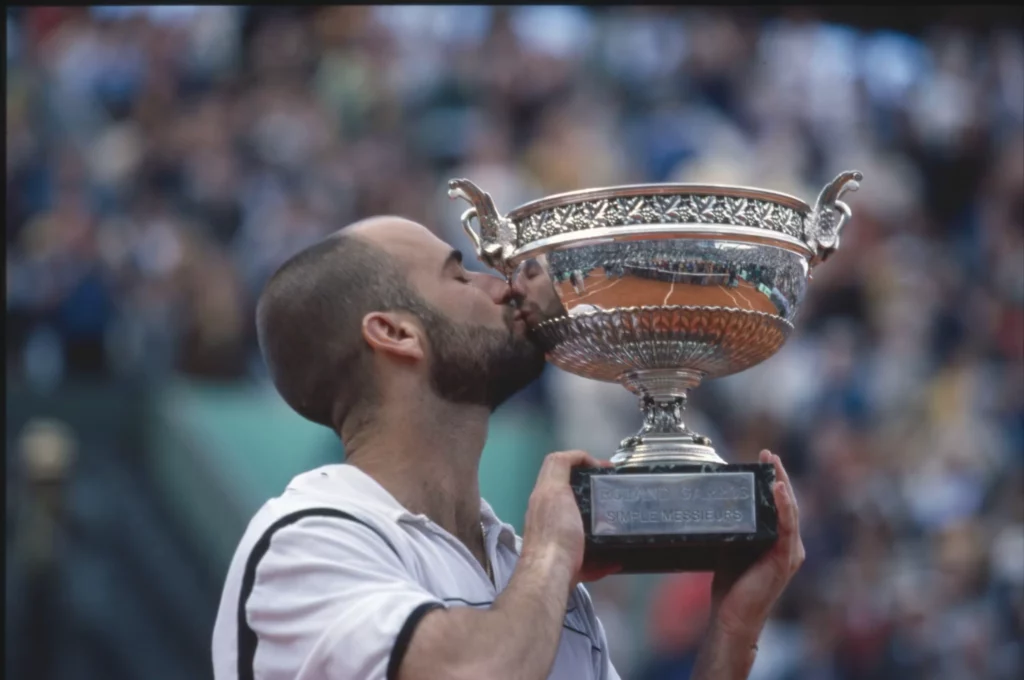
It was in this second chapter of his career that Agassi truly began to find peace with tennis. No longer the rebellious youth, he embraced his role as an elder statesman of the game, one who had overcome adversity and emerged stronger for it. Gone were the neon outfits and mullet; in their place was a calm, focused, and mature player who played with both grace and grit. Agassi’s transformation wasn’t just physical—it was deeply psychological. For perhaps the first time in his life, he began to find meaning in the game that had long felt like a burden.
But Agassi’s post-tennis life would reveal another dimension to his transformation. In 2001, Agassi opened the Andre Agassi College Preparatory Academy in Las Vegas, a tuition-free charter school aimed at providing quality education to underprivileged students. The academy was more than just a vanity project for Agassi. His involvement in education reform became his passion, and he dedicated himself to it with the same intensity he had once brought to tennis. Agassi, who had dropped out of school in the ninth grade, often spoke about the importance of education in empowering future generations.
For Agassi, the school was a way to give back, to provide opportunities for children who, like him, had faced challenges early in life. His commitment to education reform went beyond writing checks; Agassi became deeply involved in shaping the policies and curriculum of his school. He lobbied for changes in Nevada’s education system and became an advocate for charter schools nationwide. Through his foundation, Agassi has raised millions of dollars to improve education for at-risk children, further cementing his legacy as not just a great tennis player, but a true philanthropist.
Even as Agassi’s work in education flourished, his connection to tennis never entirely disappeared. In 2025, Agassi will return to the tennis world in a new role: captain of Team World at the Laver Cup. The Laver Cup, created by Roger Federer in 2017, has quickly become one of the sport’s most beloved events. Named after tennis legend Rod Laver, the competition pits Europe’s top players against those from the rest of the world in a unique team format. For Agassi, this new role marks yet another evolution in his relationship with the sport that once defined—and nearly destroyed—him.
Taking over from the fiery John McEnroe, Agassi’s appointment as Team World captain signals a shift in leadership style. While McEnroe was known for his intensity and confrontational approach, Agassi is expected to bring a more thoughtful, introspective demeanor to the role. His own journey—from a troubled young star to a seasoned veteran—makes him uniquely suited to lead a team of younger players who face many of the same pressures he once did. Players like Nick Kyrgios, Felix Auger-Aliassime, and Frances Tiafoe will have the opportunity to learn from a man who not only understands the physical demands of professional tennis but also the emotional and psychological toll it can take.
Agassi’s leadership is expected to emphasize mental clarity and personal responsibility—traits that have come to define his post-tennis life. His experience in overcoming adversity, both on and off the court, will be invaluable to his team. The Laver Cup, with its emphasis on teamwork and camaraderie, offers Agassi the chance to mentor the next generation of tennis stars in a way that extends beyond strategy and tactics. It’s about helping them navigate the personal challenges that come with being at the top of their game.
Agassi’s return to tennis as a captain is a fitting culmination of his journey. It’s a role that brings together his love for the game, his wisdom gained from years of personal struggle, and his desire to give back to the sport that made him who he is. Unlike his early years, where tennis felt like a cage, Agassi now approaches the game with a sense of peace and purpose. He no longer plays for titles or fame; instead, he sees tennis as a vehicle for mentorship, for passing on the lessons he’s learned to a younger generation.
In many ways, the 2025 Laver Cup will be a reflection of Agassi’s own transformation. It’s a moment that brings together the rebellious youth who once shunned the sport’s traditions and the thoughtful, seasoned leader who now seeks to guide the next generation. Agassi’s evolution—from the brash, anti-establishment figure of the 1990s to a philosopher of the game—is one of the most remarkable stories in sports. And as he takes on this new role, it’s clear that Agassi’s impact on tennis, and the world beyond it, is far from over.
For Andre Agassi, the journey has always been about more than just tennis. It’s been about finding himself, about learning to navigate the pressures of fame and expectation, and ultimately, about using his platform to make a difference in the world. As he steps onto the court once again, this time not as a player but as a leader, Agassi’s legacy as one of tennis’s greatest champions continues to evolve. But now, it’s no longer about winning or losing; it’s about what he can give back to the sport and the world that shaped him.











